The pandemic through a health care photographer’s lens
Staff photographer and writer Wendy Pramik has photographed the pandemic from day one at The Ohio State University Wexner Medical Center. Here, she tells her story of watching it unfold through photos and reflections.
As a photographer for The Ohio State University Wexner Medical Center, I’ve spent nearly two years chronicling our efforts to battle the coronavirus pandemic that has run roughshod over the world.
I’ve photographed the first COVID-19 vaccination given at Ohio State, clinicians compiling test results, the pandemic’s impact on citizens of our underserved communities and even a visit from the president of the United States.
Among the first images I took was of Ohio Gov. Mike DeWine side by side with hospital leaders as he toured our facilities to gauge our preparedness for the pandemic.
It was jarring to see how the Schottenstein Center, normally a boisterous venue to enjoy a sporting event or concert, was transformed into a health care outpost where our providers took center stage as reporters and photographers clamored around them.
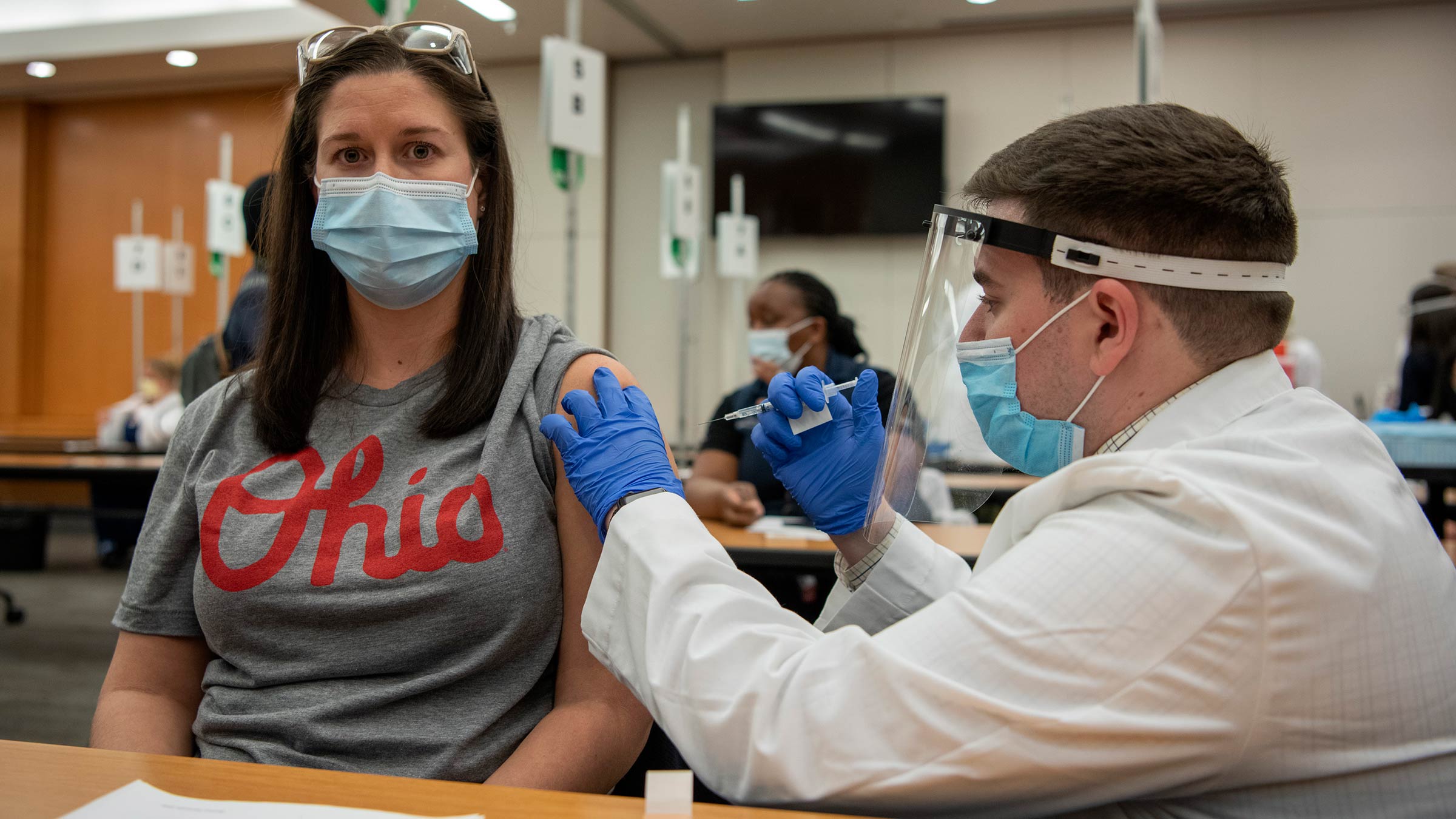

Over the past two years, I’ve captured many heroic efforts.
They include doctors stationed in parking lots volunteering their time to run testing sites, nurses at the bedside consoling patients who can’t be with their families due to visitor restrictions, pharmacists working long shifts preparing vaccines for distribution, scientists in labs identifying new COVID-19 variants, medical center staff answering thousands of questions in a makeshift call center.
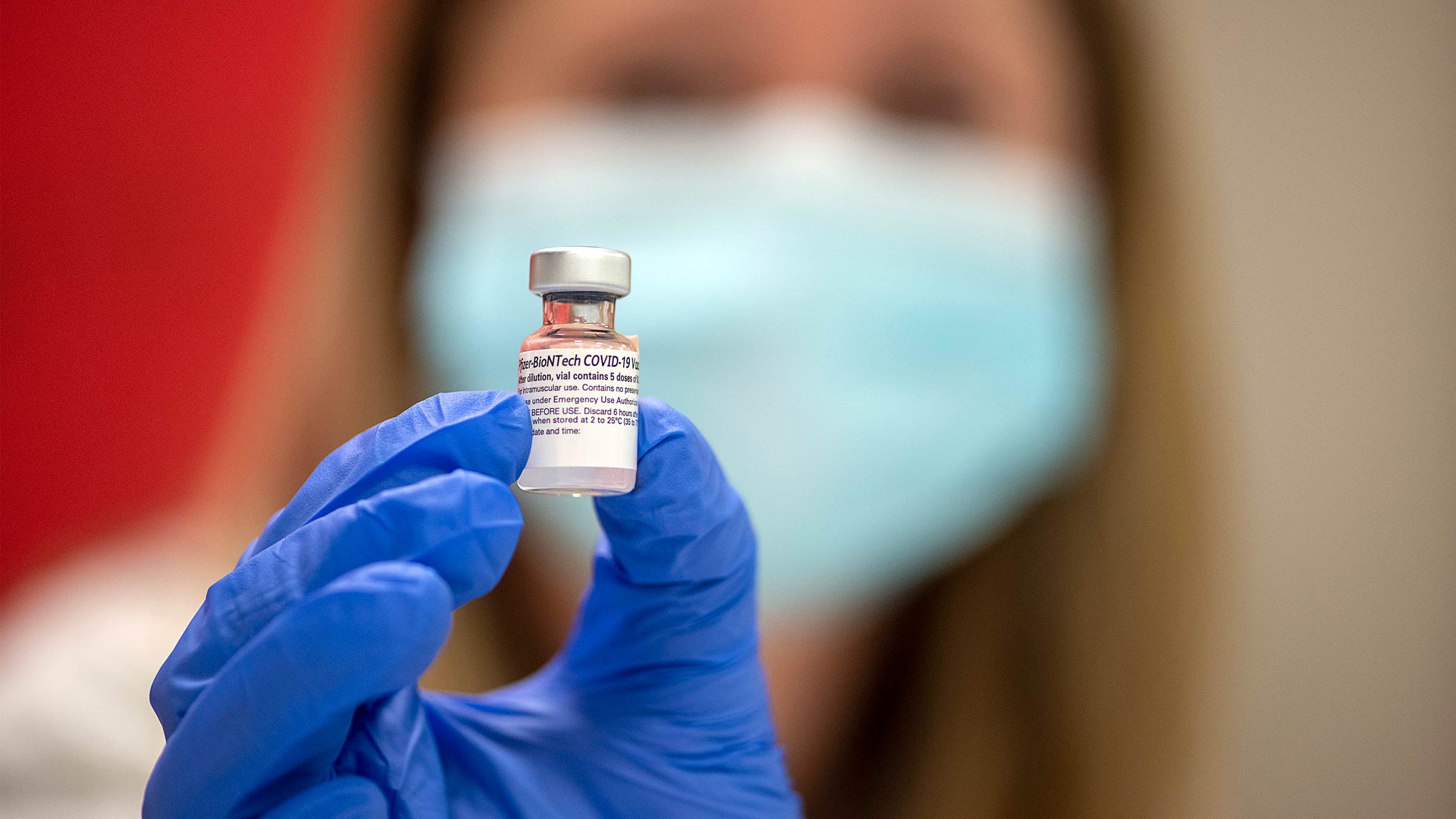


I’ve felt blessed to be able to capture so many everyday heroes earnestly performing their daily duties.
It’s allowed me to meet many gracious, hardworking people — like Marla Flewellen. Flewellen makes a lot of people feel blessed.
In her role as hospital chaplain, Flewellen offers the ceremonious blessings of the hands during Nurses Week each May, and by special request.
I accompanied Flewellen during a blessing of the hands for Ohio State East Hospital staff. The blessings give health care providers a moment of reflection and a chance for the chaplain to affirm the importance of their work. Shadowing her reminded me of how much we’ve endured during the pandemic, and how far we’ve come.
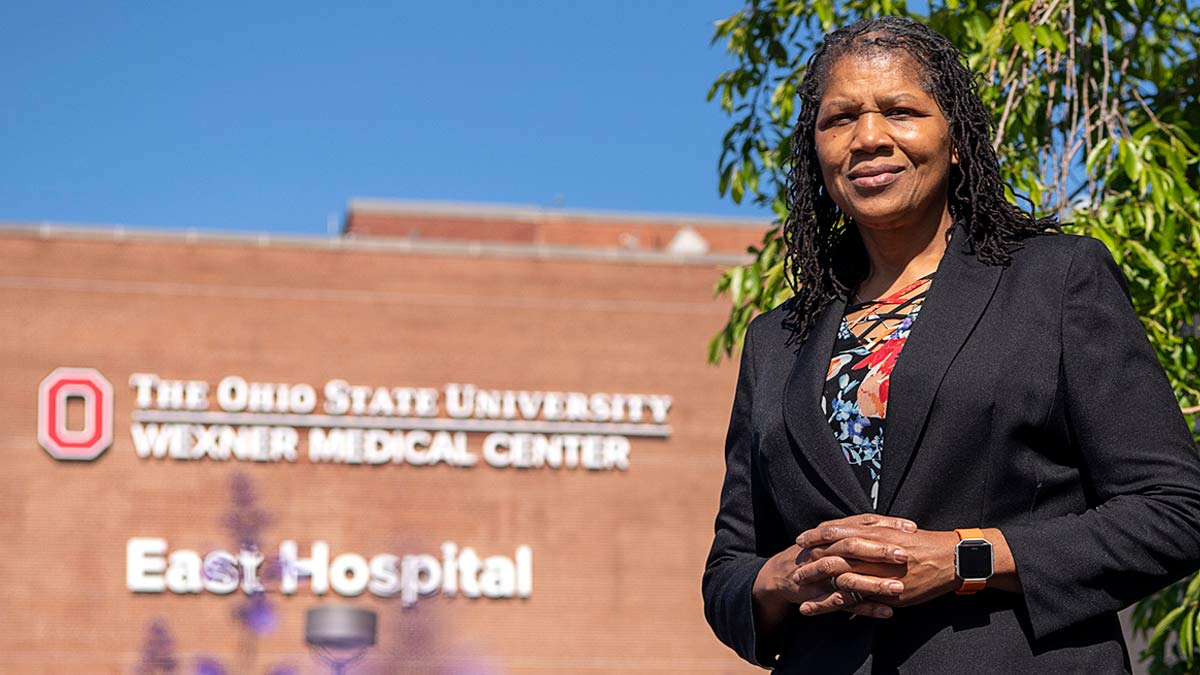
Making people feel blessed is part of Flewellen's job as manager of Pastoral Care at the Ohio State Wexner Medical Center’s East Hospital.
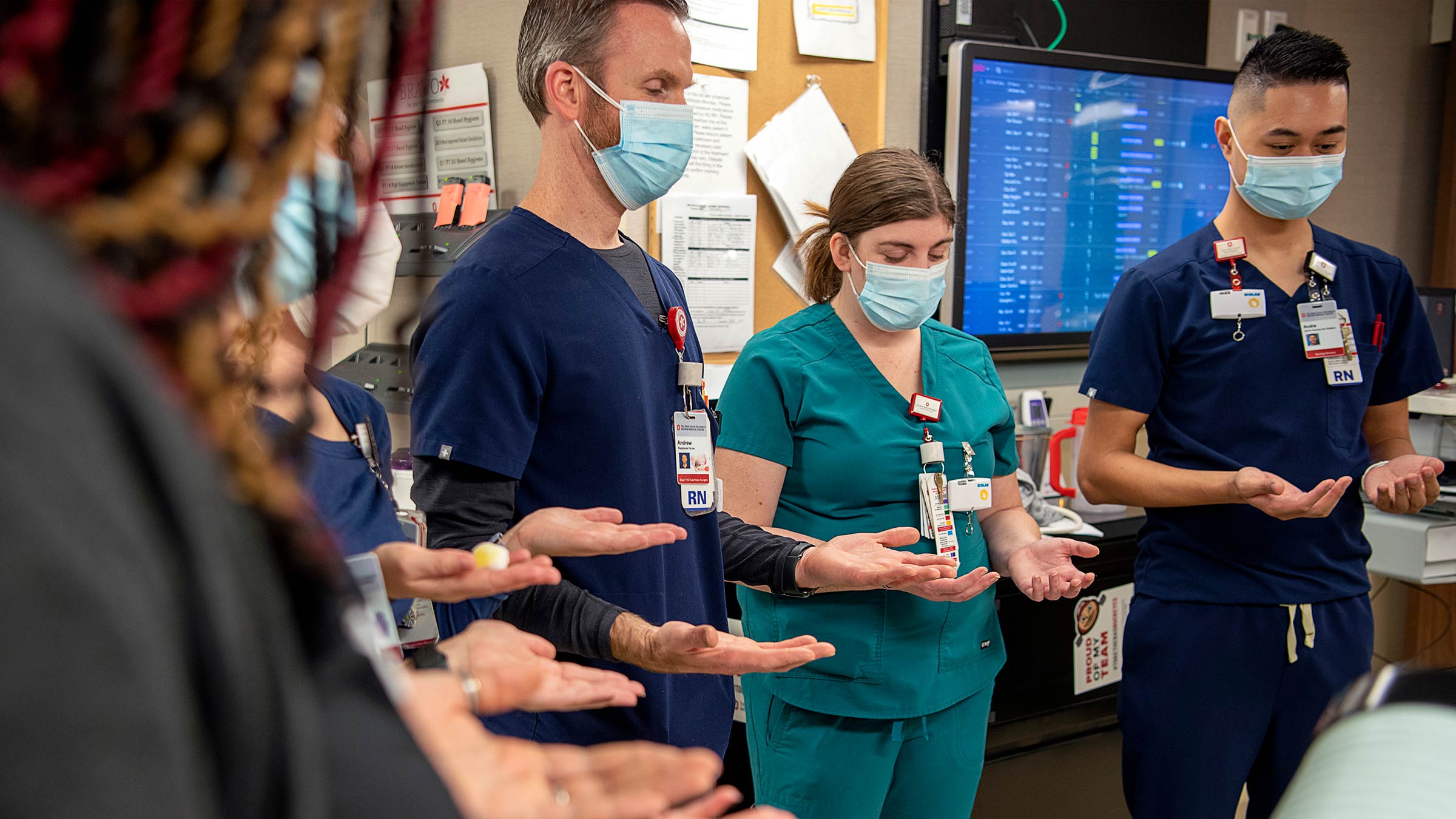
“Chaplain, can you do a hand blessing for us?” a nurse asks Flewellen. The nurse and others in her unit take small plastic bags from Flewellen’s basket.
Each contains a cotton ball that’s dipped in olive oil and scented with peppermint. They dab the oil on their wrists, forearms and the backs of their hands as Flewellen invites them to extend their hands to receive the blessing.
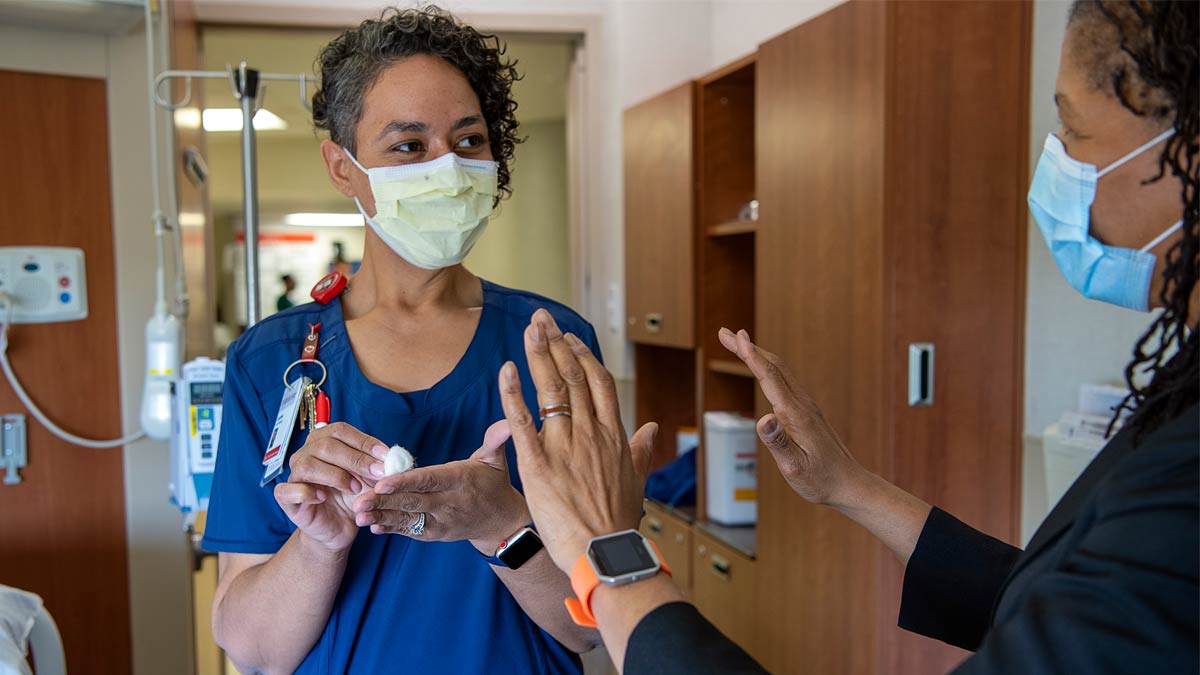
“Bless these hands and the work that you do. May you continue to bring healing, transformation and hope to all those that you touch and you serve. Amen.”
Flewellen’s been in her pastoral care role since 2014. At a young age, she wanted to be a nun. “I thought that was the only way a woman could be in ministry,” she says as she walks through a hospital hallway. She earned her Master of Divinity degree from Trinity Lutheran Seminary at Capital University.
“One thing you learn while taking chaplaincy classes is to be flexible,” Flewellen says.
She’s had to adjust during the pandemic, no longer being able to hold people’s hands. “I always try to figure ways to connect and not let barriers and limitations be in my way.”
We’ve all had to become more flexible as the pandemic has changed many aspects of our work.
It’s certainly altered my workday. I used to sit in a cubicle. I used to take photos of clinical teams shoulder-to-shoulder without fear of close contact. I now work from home and meet on Zoom calls.


I believe my photos serve as a window into what’s happening behind the scenes at the medical center.
Our lives have changed dramatically, seemingly overnight. What were once a freely accessible hospital and campus now are contained environments.
Yet as much as we keep our distance or engage with each other through a screen, I cannot capture images of our lives by sitting in my home office. I still must be there, in person, although nowadays in a more careful, better-controlled way.
By photographing many parts of the medical center, I see many hands at work. I want to capture them authentically. I try to blend in, become invisible. I’ve gone from dressing up at work to wearing a uniform like our providers do. I use my camera as a tool, alongside them as they use their tools — a stethoscope, a scalpel, a vaccine.
Like Flewellen, I see my role as that of a “bridger.” She likes to connect with people and connect resources. As a photographer, I try to notice people in everyday roles and capture their humanity for others to appreciate. I’ve made a lot of connections.
The nursing staff at Ohio State East Hospital is an example. They created a safe method for Flewellen to conduct her blessing, helping her prepare hundreds of the COVID-19-safe cotton balls.

During the pandemic, I’ve stopped to notice our health care workers. I know that their work is important.
I’ve seen the commitment, and my goal is to capture that commitment in my photos.
As I look back during the editing phase on what I’ve taken earlier in the day, I feel more connected to their mission, to our mission.
I follow Flewellen into the elevator. “When I was a kid, I wanted to be a photographer,” she says. “I got my first Kodak camera when I was seven. My dad took a lot of pictures. He created a darkroom in our basement.”
She offers to take my photo and bless my hands. She takes my photograph as I rub oil on my wrists. She puts down my camera. She elevates her hands, palms down over mine. I feel an energy between them. A connection between her work to touch the lives of our staff and my work to document it.

“Bless these hands and the work that you do,” Flewellen says. “May you continue to bring healing, transformation and hope to all those that you touch and serve. Amen.”

When you give to The Ohio State University Wexner Medical Center, you’re helping improve lives
We’re committed to making advancements in research, education and patient care that will have an impact throughout Ohio and the world.
Ways to Give




